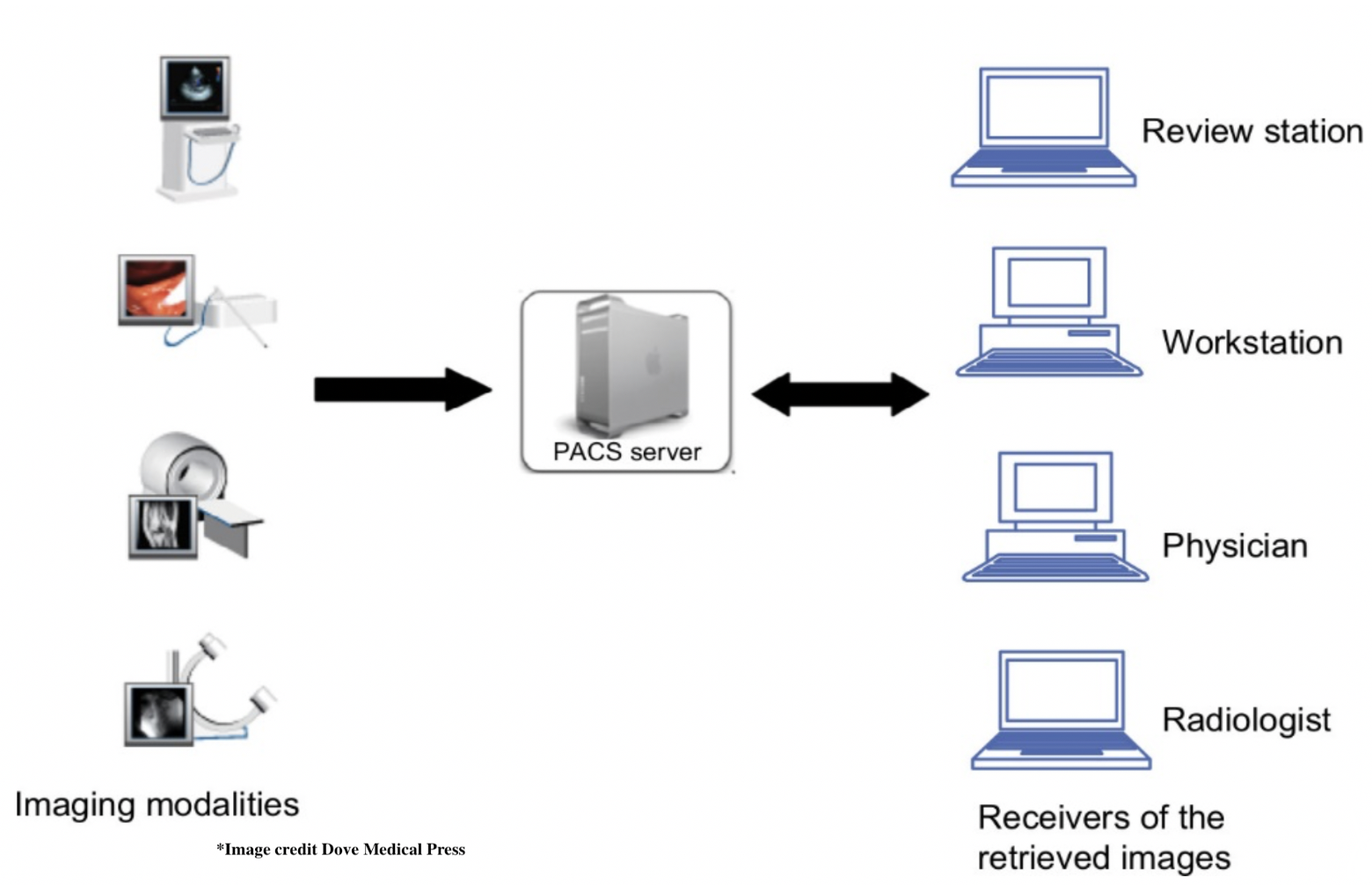Medical Imaging
Formerica OptoElectronics Inc. transceiver solutions are ideal for providing robust and secure data transmission for the medical imaging industry. They ensure that the integrity and security of data transmissions will not be compromised by the unique operating conditions found in these applications.
Benefits of Optical Data Transmission
1. High bandwidth provided by optical fibers guarantees high definition reliable images and video.
2. Fiber optic technology is not susceptible to EMI (Electromagnetic Interference) from medical imaging equipment making it ideal for interconnect between imaging equipment to viewing and storage systems.
3. High definition video streaming can be transmitted to doctor’s offices for providing telemedicine services.
4. Unlike copper wire, optical solutions cannot be tapped. This makes optical fibers an ideal media for creating secure networks that prohibit unwanted access to Electronic Medical Record (EMR) systems.
All companies working in Medical Imaging modalities and network data transmission technologies are good candidates for Formerica Optoelectronics Inc. Fiber-optic network transceiver module solutions.
These technologies include:
Magnetic Resonance Imaging (MRI) is a medical imaging technique used in radiology to form pictures of the anatomy and the physiological processes of the body. MRI scanners use strong magnetic fields, magnetic field gradients, and radio waves to generate images of the organs in the body.
Positron-Emission Tomography (PET) is a nuclear medicine functional imaging technique that is used to observe metabolic processes in the body as an aid to the diagnosis of disease.
X-rays use radiation to produce images of the body. When the rays pass through the body, dense objects—such as bones—appear white on the film. X-rays are typically used to view and diagnose bone disease, degeneration, fractures, dislocations, infections and tumors.
CT scan, or computed tomography scan is a medical imaging procedure that uses computer-processed combinations of many X-ray measurements taken from different angles to produce cross-sectional images of specific areas of a scanned object, allowing the user to see inside the object without cutting.
Important diagnostic information is critical for medical professionals to assess the patient’s vital healthcare conditions and functionality to sustain patient’s quality of life.
In summary, although the typical healthcare network utilizes both Fiber optic and copper based solutions, fiber optics can transmit data faster, more reliably, and more securely than copper wires, therefore providing a far more robust and preferable method of data transmission.
Benefits of Optical Data Transmission
1. High bandwidth provided by optical fibers guarantees high definition reliable images and video.
2. Fiber optic technology is not susceptible to EMI (Electromagnetic Interference) from medical imaging equipment making it ideal for interconnect between imaging equipment to viewing and storage systems.
3. High definition video streaming can be transmitted to doctor’s offices for providing telemedicine services.
4. Unlike copper wire, optical solutions cannot be tapped. This makes optical fibers an ideal media for creating secure networks that prohibit unwanted access to Electronic Medical Record (EMR) systems.
All companies working in Medical Imaging modalities and network data transmission technologies are good candidates for Formerica Optoelectronics Inc. Fiber-optic network transceiver module solutions.

These technologies include:
Magnetic Resonance Imaging (MRI) is a medical imaging technique used in radiology to form pictures of the anatomy and the physiological processes of the body. MRI scanners use strong magnetic fields, magnetic field gradients, and radio waves to generate images of the organs in the body.
Positron-Emission Tomography (PET) is a nuclear medicine functional imaging technique that is used to observe metabolic processes in the body as an aid to the diagnosis of disease.
X-rays use radiation to produce images of the body. When the rays pass through the body, dense objects—such as bones—appear white on the film. X-rays are typically used to view and diagnose bone disease, degeneration, fractures, dislocations, infections and tumors.
CT scan, or computed tomography scan is a medical imaging procedure that uses computer-processed combinations of many X-ray measurements taken from different angles to produce cross-sectional images of specific areas of a scanned object, allowing the user to see inside the object without cutting.
Important diagnostic information is critical for medical professionals to assess the patient’s vital healthcare conditions and functionality to sustain patient’s quality of life.
In summary, although the typical healthcare network utilizes both Fiber optic and copper based solutions, fiber optics can transmit data faster, more reliably, and more securely than copper wires, therefore providing a far more robust and preferable method of data transmission.



